Though it was already mid-April, winter still gripped even low ground in the valleys, and the mountains rose in folds of spotless, shiny snow far up into deep blue skies. It was very hard to believe that we were in our own familiar Strath Spey and not in some high valley near the Arctic Circle. But then this was 1951, after the longest cold spell and heaviest snowfalls the central Highlands had seen since 1895. For four days we had been ski-touring back and fore across the Monadh Liath. The severity of the storms up there, and the snow lying right down in the streets of Newtonmore at times, gave us a warning what to expect when we headed up Glen Tromie for the Gaick hills on the 13th April.
It was a very wild morning. Occasional flying showers swept over and enormous snow-plumes hundreds of feet high were billowing into the sky over A’ Chailleach of the Monadh Liath. At the top of the glen by Loch an t-Seilich., we had to turn the car, after vainly trying to charge through the drifts. Gaick is notorious for its avalanches, and here several avalanches had recently torn down boulders, mud and snow right to the roadside. That evening, on the long ridge of Sron Bhuirich, I was looking at one of the few double cornices I have yet seen in Scotland; a cornice that had avalanched on both sides. Up at Gaick Lodge, Alick Sutherland had just moved in a week before, after being forced to evacuate as early as December because of the heavy snow and the danger of avalanches. The frost was intense when I turned in at the bothy that night. All around, the immense steep white domes of the hills reared up to a black velvety sky. Not a sound, save at times the faint rushing of some burn far away below the snow, rising and falling as the wind changed.
The next morning was a perfect one: an unclouded blue sky, and a frost of great severity that had even frozen the fast burn down the steep face of Sgor Bhothain. Over the small snow-free patches of ground in the floor of the glen the air was alive with the metallic hum of drumming snipe, the joyous shouting of oyster-catchers and the crying of peewits. It was good to see spring slowly forcing its way up into this snowy wilderness. The unearthly blue of the sky, the heather slopes a rich chocolate colour merging soon with the shimmering snows above, the sun streaming through the trees, and the cheery bird songs, all made this one of the finest walks I can remember, in spite of my heavy pack and skis.
I met my father at the dam, and at once we started climbing on ski-skins, away up the great swelling Mullach Coire nan Dearcag. A few hundred feet above the dam, I left behind the last heather and stones I was to see till Geldie Lodge. A wind rose quickly out of the west as we climbed, and dark clouds piled over the Monadh Liath. Twenty minutes later the sun had gone, and menacing clouds of black, orange and white filled the sky. The slope turned icy, so hard that the ski-edges failed to bite; so, for lack of an ice-axe I scraped out edges for our boots with a ski-stick, a slow and tedious job. But at last here was the plateau, rolling on and on for miles to merge in a grey world of sky and snow. The snow was still hard up here, and we went rattling on at a great pace, the skis slapping on the icy ridges.
As we neared Coire Bhran, there came the quickest weather change we had ever seen. One minute the clouds were overhead and the distant Drumochter peaks still visible, next minute dense cloud all round and a wall of huge snowflakes sweeping down with a loud hiss. It was impossible to see beyond the tips of our skis, so we had to go forward side by side, steering by compass.
Small dips in the snow seemed tremendous gulches and we often fell on flat snow. Afraid of skiing over the cornices of Coire Bhran, we decided to get out. The descent, back the way we had come, seemed endless and desperately tiring, with constant falling on icy snow. We were almost at the dam again, ploughing through three inches of new snow, when out came the sun and there were the snowflakes streaming high above, glistening against blue sky!
We turned again, this time straight into Coire Bhran. In the corrie we parted, my father back to the dam, I to climb to Leathad an Taobhain and beyond. For the last part of the climb, I had to remove skis again and kick steps up an icy slope, while great seas of drift raced past, buffeting my back. Near the top, at almost 3000 feet, I faced back into the gale. Far away to the west, miles away under angry, lowering clouds, a minute black speck stood out sharply in this lonely waste of white. It was my father. I watched the progress of the little speck with interest, as it crawled like some tiny mite or beetle, till the fierce cold forced me to move.
On with the skis. Sailing with the wind behind me, I shot over the top and pointed the skis into the new country that lay ahead. This vast, gently sloping bowl was the Upper Feshie, and today the course of the river was nowhere visible. Now the snow was powdery on top of a hard-packed surface that had seen no thaw. It was a joy to swing down over waves of snow sparkling in the sun, then to climb again to the tops on the south side. This was the old Mounth plateau, stretching for miles of high ground; there can be few places in Scotland where it would be easier to get lost. Up here it was like being on top of some great ice-cap in the Arctic. There was not a sign of life, no deer, not even a grouse or ptarmigan, nothing, till I spotted a solitary fox crossing the hills. What it was living on and where it was going are a mystery.
Now and again, squalls swept down in a fury of choking drift. At times, I could not even see my skis, but I was always able to press on slowly as I had the wind at my back. But always the squall would pass and the sun would appear again with fierce blinding light. Sometimes I stopped to watch the drift trails snaking swiftly over the snow, or whirling past like great water spouts. I saw another fox crossing towards lower Feshie, the last sign of life till evening. From the bare top of Carn an Fhidhleir, there was a long run straight downhill for miles towards the Geldie, now over the Spey watershed and into the Dee. Soon I was poling again down in the floor of the glen, and I began to feel tired. It was now five o’clock, and seven hours and 23 miles were behind me since Gaick. Then suddenly round a corner a great black shape loomed: Geldie Lodge!
It was good to sling off heavy pack and skis, collect some blocks of ice to melt for soup, and lie back on a sleeping-bag beside the roaring stove. I soon had a three-course meal, finishing with raspberry jam mixed with powder snow: a magnificent trifle. How strange it was to stand looking out at these broad windows that had seen luxury long ago, away down Glen Geldie and out to Beinn Bhrotain, a terrible arctic wilderness this day. Depressed by the dreariness of the shattered lodge, and feeling in great form again after the meal, at six o’clock I decided to press on for the Linn o Dee.
It was already freezing hard. Outside the lodge I had a bad attack of cramp from sitting too long, but once I was on the move again for half a mile, the last twinges had gone. After climbing the gentle rise to Cairn Geldie, I slid down its far side to the Dee, here hurrying on invisible beneath deep ice and snow. As I was not yet tired, I pushed on up the Feith nan Sgor hill towards Luibeg, instead of skiing down Glen Dee to the Linn. I had just started the 1000 foot climb when a great storm lashed down in thick black columns.
The slope was very gentle and seemed endless in the midst of heavy falling snow. But at last here was the watershed at Sgor Mor. Just then the snow stopped falling, and the sun peeped out through a hole in the clouds. It glinted on the great waste of Glen Geldie and on the edges of all the hills. Geldie Lodge looked the loneliest place on earth; a tiny black dot in a pool of gold light. I watched the sun sink behind the wild clouds that were to bring an all-day blizzard by the next morning. The Cairngorms turned iron-grey in the after-light. Away east, down Deeside and far beyond into space, the sky turned from a translucent, duck-egg green to a murky purple. It was time to go.
Northwards I pointed the skis, far away down to the wind-swept corner of the old pine wood on the shoulder of Sgor Dubh. Then swoop after swoop on a velvety snow carpet through the trees at high speed, with care thrown to the winds now that I was so near the end of the journey, and at last down the steep bank to Luibeg. It was half-past eight and dusk was falling. I could scarcely believe I had been talking to Alick Sutherland at Gaick only about ten hours before. So many glens and hills and changing scenes had passed on this long trek that it seemed to have taken days. Then I suddenly remembered: it was my 21st birthday! Could any present have been finer than this one that would last a lifetime in the memory?
Adam Watson
Thirty miles on ski
(1957–58 Etchachan Club Journal, Vol 2, 186–190)
Courtesy the Etchachan Club


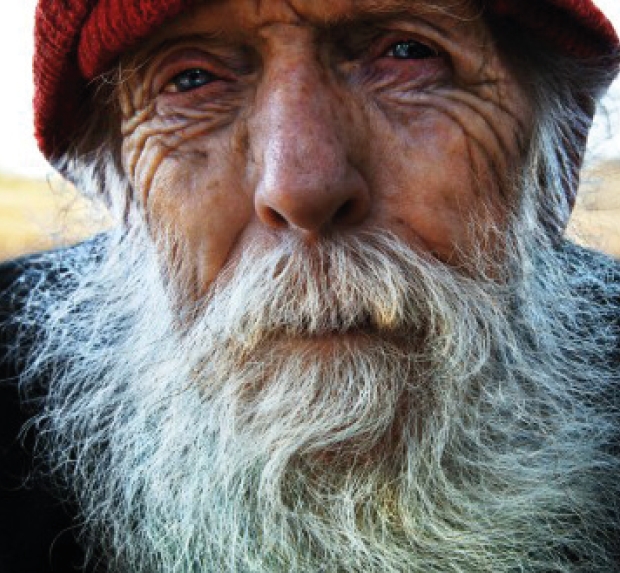
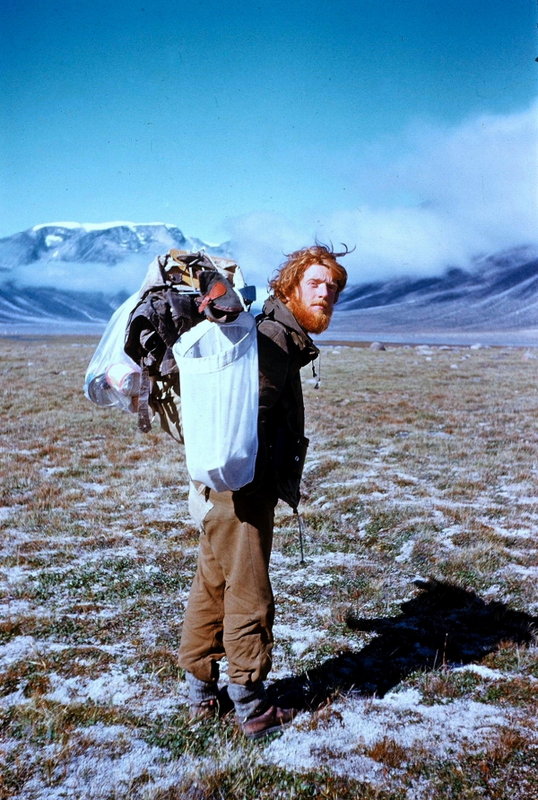
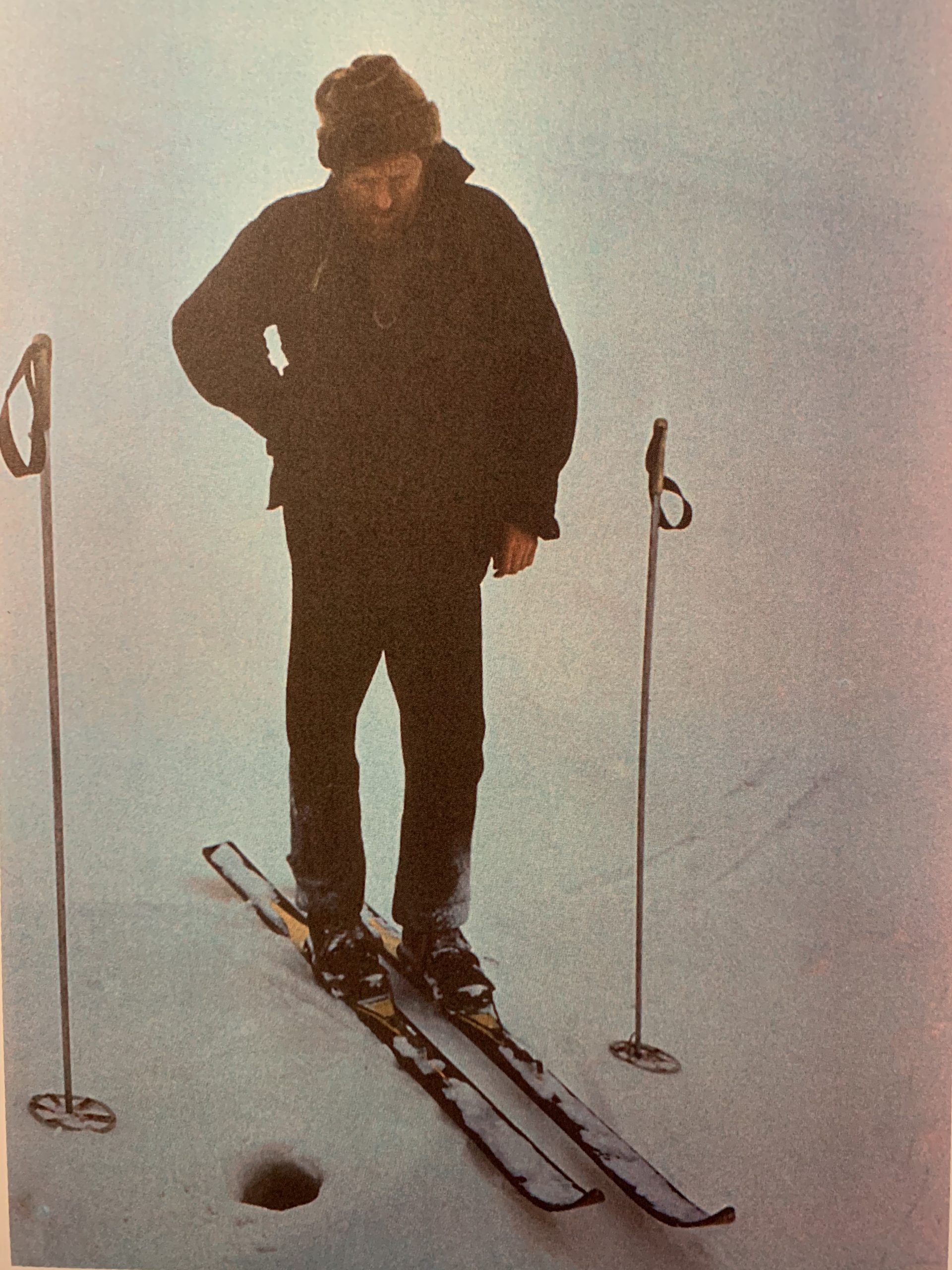
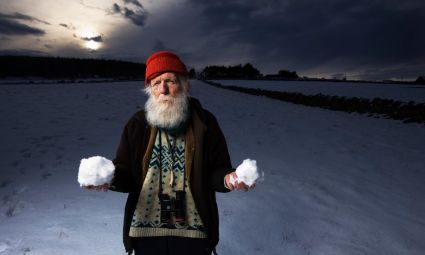
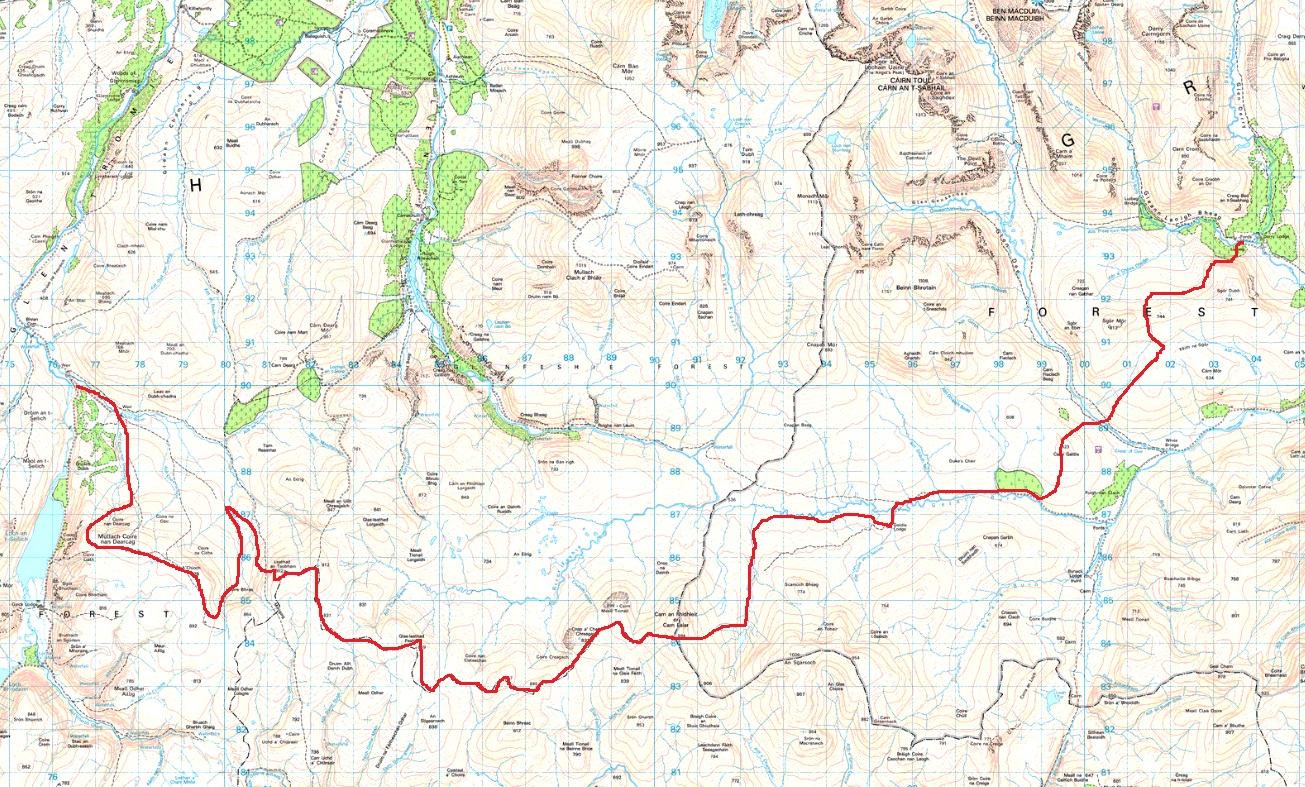
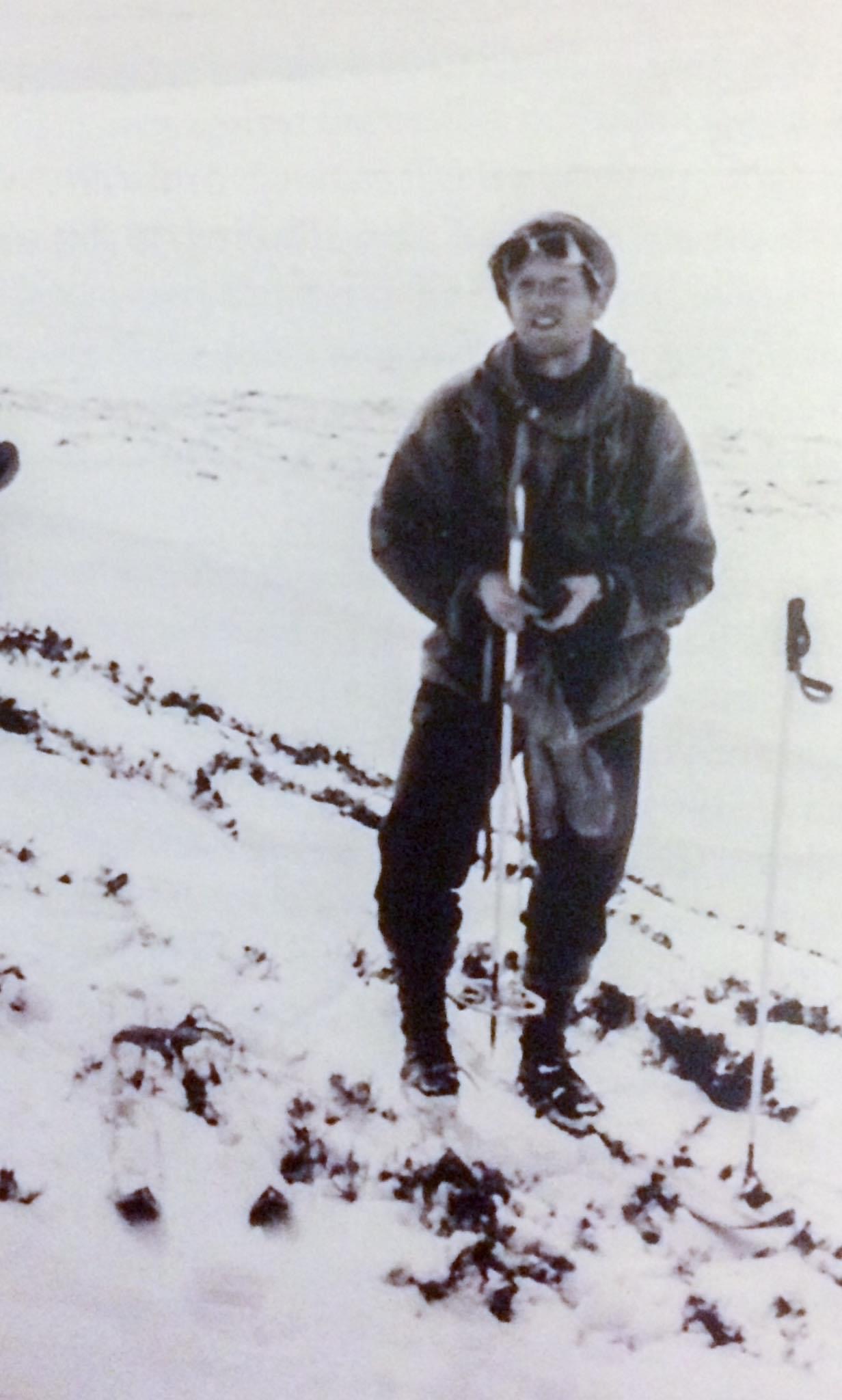
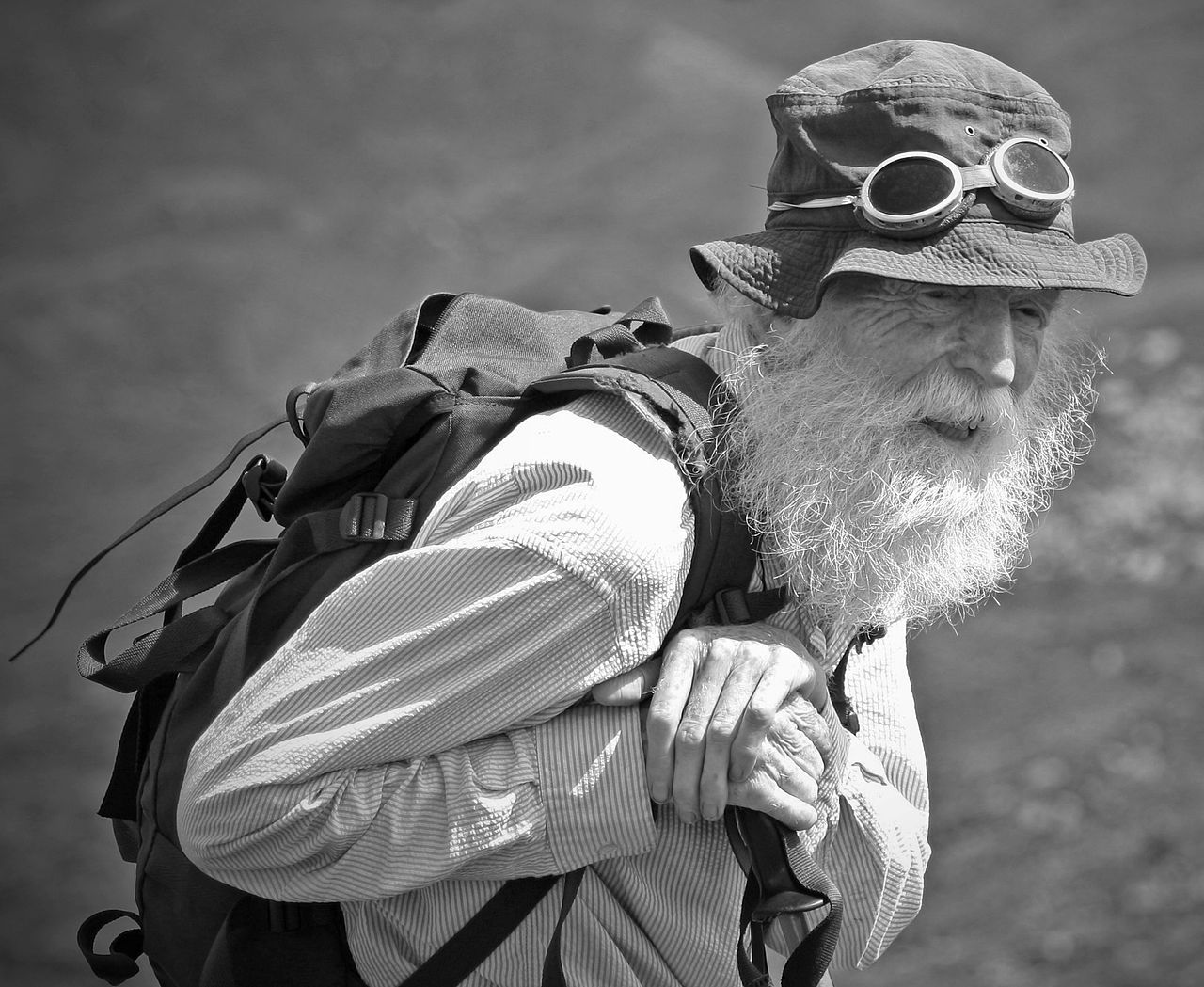
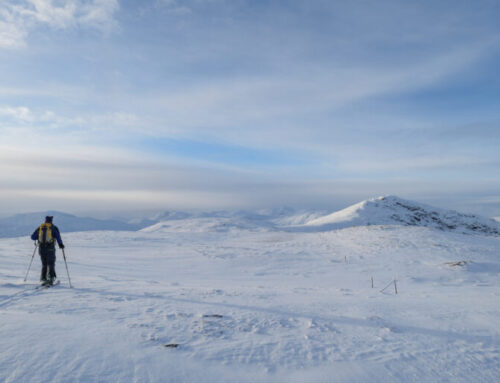
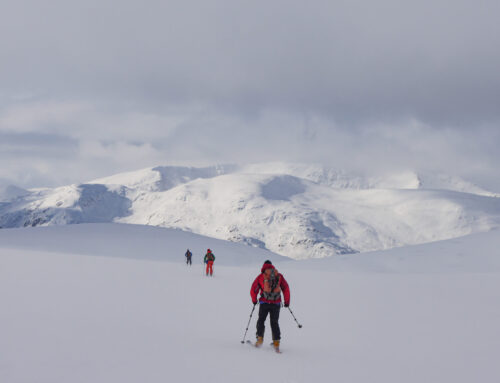
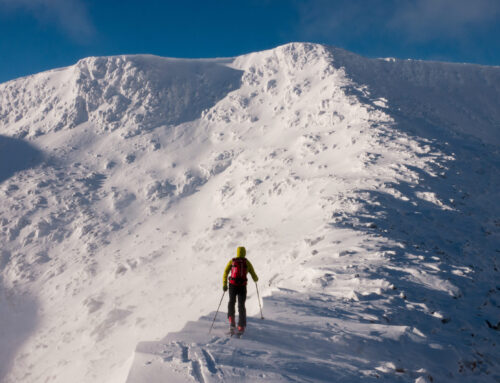
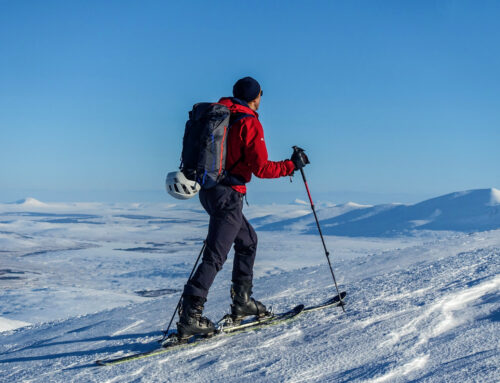
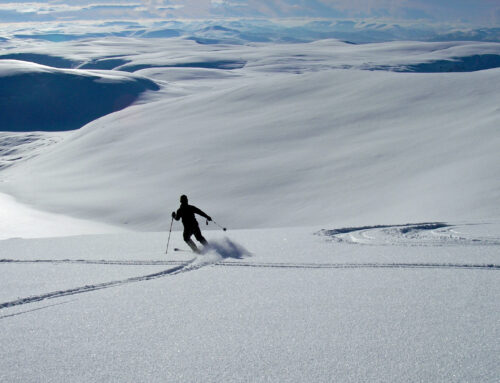
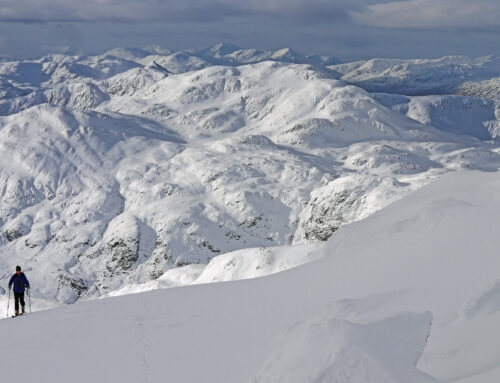
An epic ski journey following the perfect touring line & possibly still to be repeated!